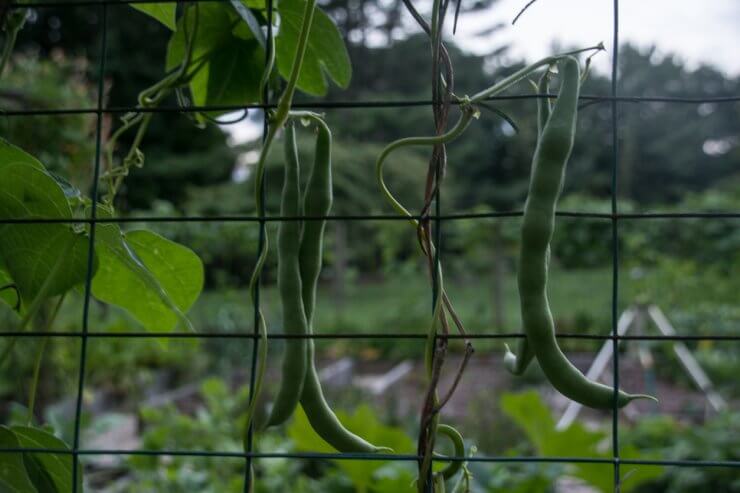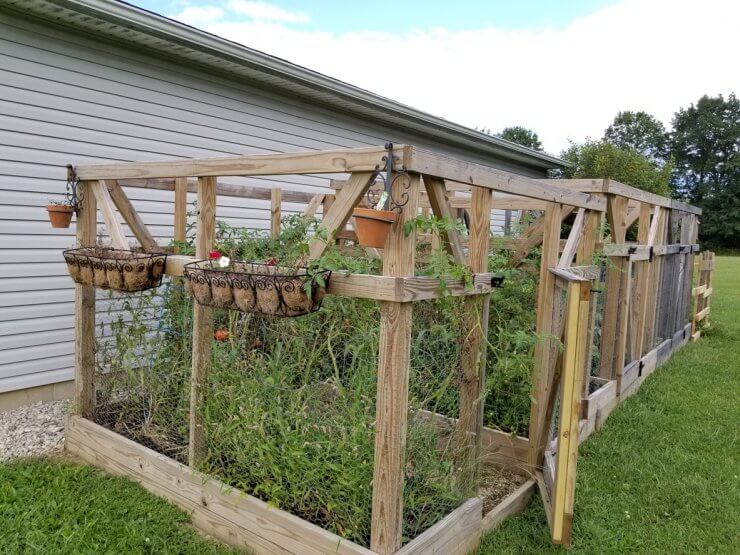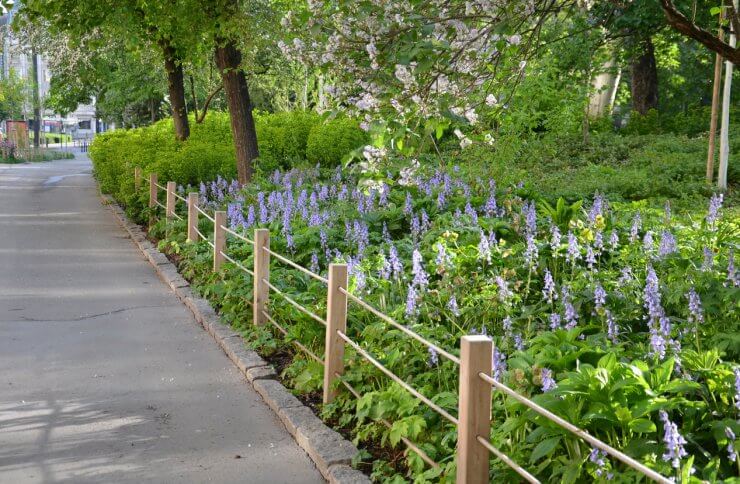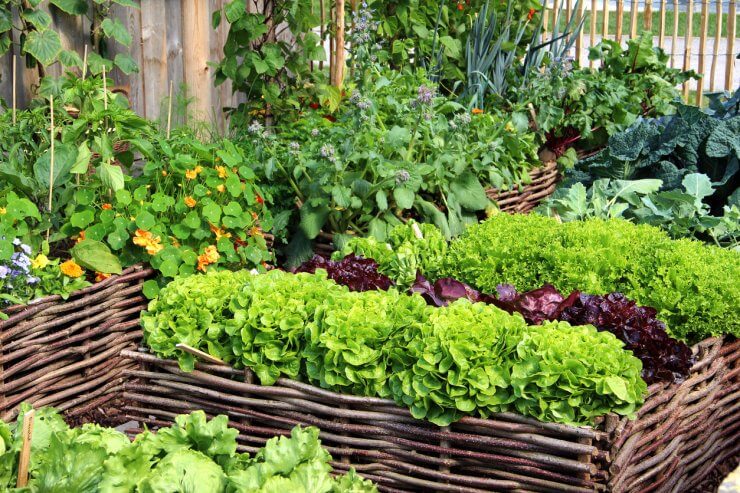
Good fences make good neighbors, but can they make good gardens, too? A vegetable garden border fence can accomplish a few different goals all at once. For one, it can keep rabbits and other critters from wreaking havoc on your vegetables. A garden border fence also provides some visual separation in your yard. Depending on the material, fencing can serve as a wind shield to more delicate vegetables or seedlings and even provide some partial shade for others.
When deciding on what type of garden border fence to install, consider what your primary objectives are as well as your budget. Before you begin, take a look around your yard, garage, shed, and basement to see if you might already have useful materials. I love using recycled materials in my garden to craft things like trellises or compost bins. It’s not a stretch to consider using recycled or upcycled objects when putting together a garden border fence. Here are seven creative vegetable garden border fence ideas using all kinds of materials.
Discover 7 top tips for growing, harvesting, and enjoying tomatoes from your home garden—when you access the FREE guide The Best Way to Grow Tomatoes, right now!
1. Simple wire fencing
Use simple materials like wire netting or chicken wire to keep critters out of your vegetable garden. The garden border fence also serves as a make-shift trellis for climbing vegetables like pole beans and cucumbers. The benefits of a simple wire fence are that materials are inexpensive, and the fence can be removed and reconfigured with relative ease. This is something to consider if you change your garden design year after year.
2. Colorful fence
Turn a plain picket fence into a creative vegetable garden border fence with some colorful paint. This is a great, kid-friendly project that can turn a drab corner of your yard into a rainbow-infused feature. Depending on their placement, you can even paint the names of vegetables and herbs directly on the fence for easy identification. At the end of the season, simply paint over the fence so you’re ready to start new in the spring.

3. Full enclosure
If you’re short on space and want to maximize every square inch, consider a garden border fence that is built into a full enclosure. Building your fencing up high will give you additional vertical space to hang herbs and veggies. Vertical gardens are an excellent way to double up on your square footage.

4. Rope fence
A rope fence may seem more ornamental than utilitarian. And it’s true. By itself, a rope fence really only accomplishes an aesthetic goal. Though I suppose you could train your pole beans to climb along the ropes and utilize them like a trellis. But if your dead-set on the nautical aesthetic, consider adding a bit of wire netting or chicken wire on the inside of the rope fencing to add protection from hungry critters.

5. Variegated picket
Talk about a new take on an old standby. A simple variation in picket lengths turns an otherwise simple garden border fence into artistic garden flair. Swap out regular fencing pickets for small tree branches or other scraps of wood to create an even more unique vibe. This style will deter critters and may even keep the birds away with its jagged edges.

6. Basketweave fencing
Were you really good at making those loop potholders as a kid? Then this garden border fence idea is for you! Requiring the patience of a saint and the obsession of Monica from Friends, the final product will wow all of your garden visitors. The more organic the materials you use, the more natural the fence will look. This aesthetic works well on long-term, defined garden spaces since it is unlikely you’re going to want to undo and redo this fencing year after year.

7. Fencing becomes a garden feature
If you want to turn your vegetable garden into a destination, a full garden feature may be the best use for a garden border fence. Combining raised garden beds, trellises, stone pathways, and gates, this fencing becomes a border for your garden oasis. This is ideal for folks looking to make their garden stand out in their yard.
All of these fencing options may be giving you analysis paralysis. Take a deep breath and focus on your personal objectives and budget. If your goal is to keep the rascally rabbits out of your lettuce, focus on fencing that doesn’t have any large openings. If you’re just starting out and want to keep costs low, look for materials you may already have or consider an inexpensive option. Whatever you choose, find a way to make it your own with color, texture, or even some fun signage.
Do you have a fun garden border fence in your yard? What materials did you use? Let me know in the comments!
Discover 7 top tips for growing, harvesting, and enjoying tomatoes from your home garden—when you access the FREE guide The Best Way to Grow Tomatoes, right now!






The use of weld wire fence is the best due to the small holes. It seems the rabbits still get through very small holes. Wrap the lower portion of the weld wire with chicken wire and bury about a foot of it laid out flat around the perimeter to keep critters from digging under the fence.
Often people rebuild their deck and discard the remanufactured wood. This material is made from recycled plastic and is pricy to buy new. I have used discarded remanufactured wood for years and works great. It’s necessary to cut some of it to make staked on corners and splices. /the material has a tendency to warp.
Love all the practical information, especially since I’m just beginning to plan this years garden.